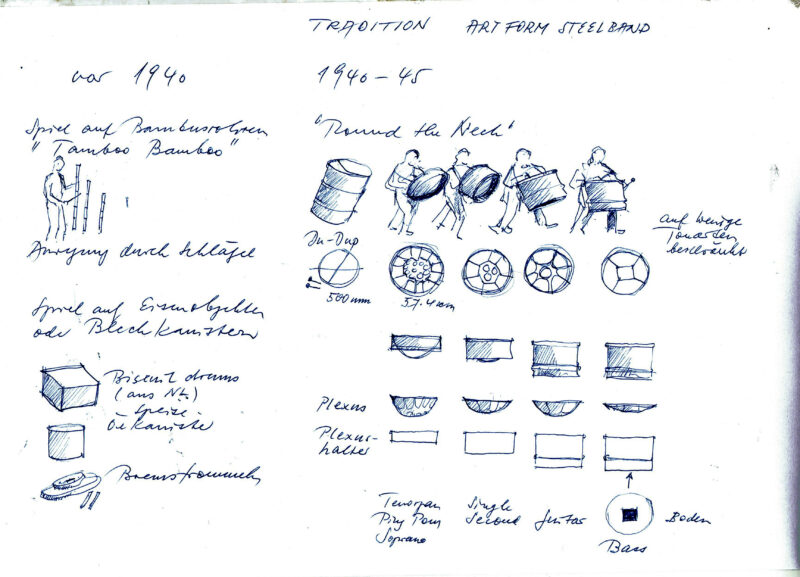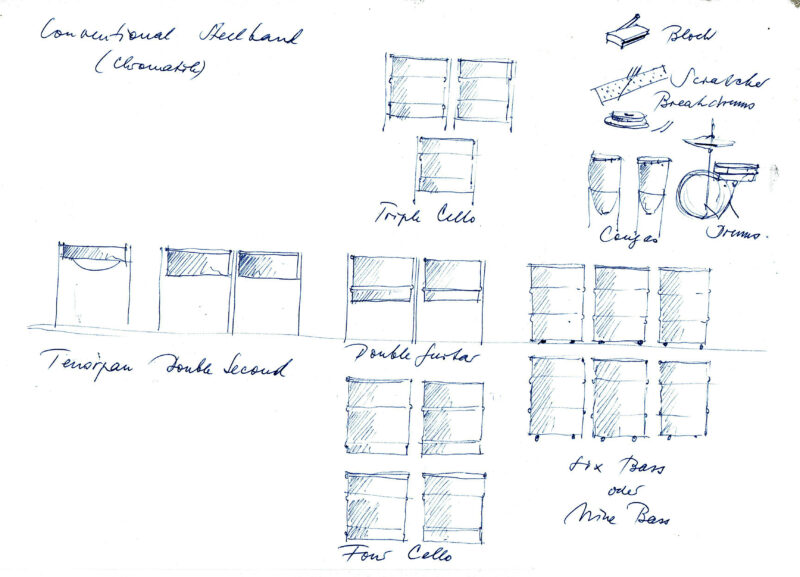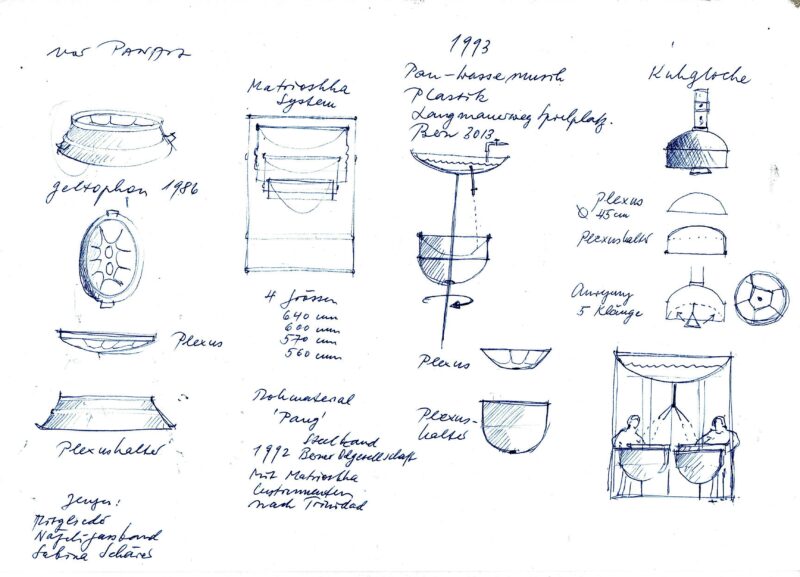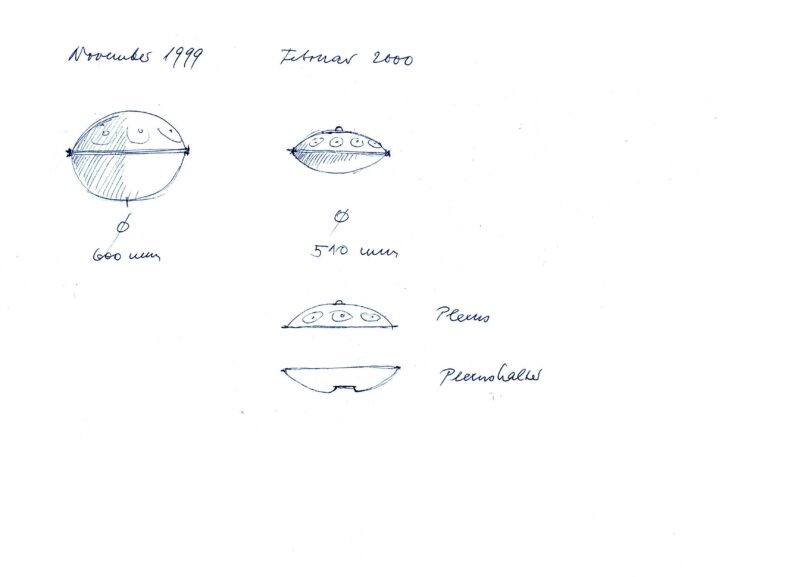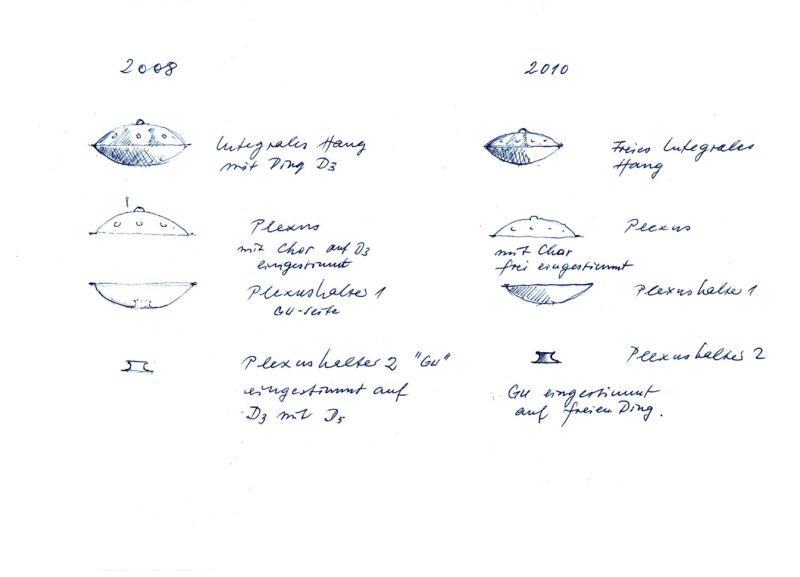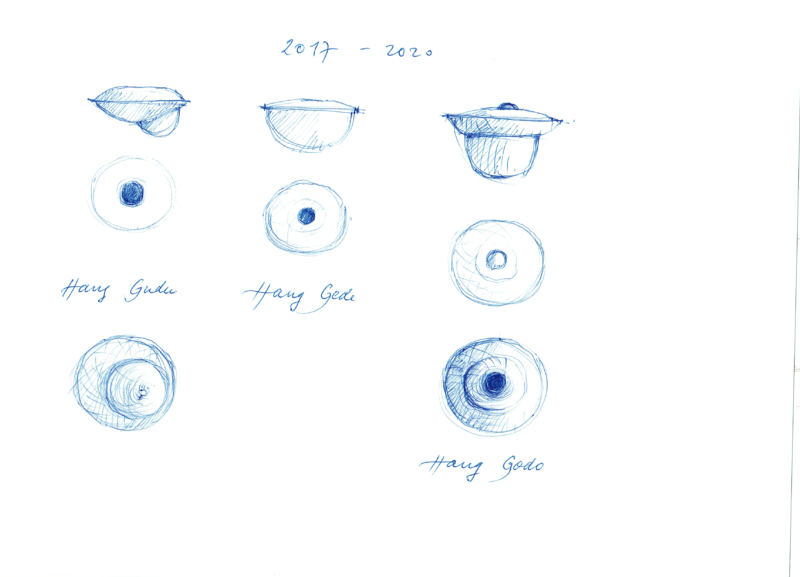Litigation concerning the Hang
Catégories: Blog, News, Articles, Histoire, Droit d'auteur Auteur: PANArt 15. janvier 2021
In 1976, I picked up a hammer and together with friends, we converted oil drums to steel pans: tenor pans, single seconds, single guitars and single basses. We took these instruments onto the streets of our city of Bern and amazed the audience.
In 2000, more than 20 years later, we tried to sell a metal container with a new kind of sculptural form, on which audible percussive sounds could be made using our hands, and which we called “Hang”. Hardly anyone took notice.
Today, once again about 20 years later, there is a great demand for instruments with the same form as the Hang. However, most of these instruments are made by suppliers who have never received any authorization from us, and they call these “hand pans”.
What has happened in the meantime?
Traditionally, making a steel pan begins by pounding the bottom of an oil drum with a hammer. The result is a plexus, a network of concavely fixed sound fields. This plexus is held together by the cylindrical mantle of the oil drum called the plexus holder. Through repeatedly pounding the bottom of the barrel, the body comes under great pressure, causing the sound fields to be rigid. Thanks to this pressure, the tuner can form the sound dynamic (modulation). The art of tuning has changed continuously ever since the steel bands came into existence in the 1940’s and has become much more differentiated and sophisticated. The invigorating sound of a modern steel band is based on the art of stretching the cylindrical containers, resulting in short sounds of a high intensity and defined pitch, embedded in a network that communicates in a highly non-linear fashion, allowing the cathedral effect.
In 1994 we revolutionized this process of making steel pans and instead pulled a round steel sheet across a die to form a spherical segment, nitrated it and crimped in a plexus holder.
By separating the firmly connected plexus and the plexus holder of the traditional steel pan into two separate forms, an entirely new playing field opened up. This was a kind of liberation from the oil drum and turned out into a first-rate challenge. Sabina Schärer and I began making copies of the traditional instruments (gong, gamelan, bell, drums) and thus started to understand the complex physics. We realized that the effect of hammering on our newly developed and patented material caused such a high degree of strain that drumsticks were no longer the adequate stimulation tool. The intensity of the sound was too strong, and so our focus turned to the hand (called “Hang” in the Bernese dialect) and its versatile stimulation possibilities.
The path to an aesthetically pleasing form – actually a sound sculpture – which is suitable for daily play, called for a reduction to the essentials. Our first, entirely new kind of sound sculpture (in 2000) which we called “Hang” primarily aroused the interest of hand percussionists. Gradually, the enthusiasm spread in all directions, whereby the predominant number of buyers were – and still are – people whose access to musical expression had so far remained limited.
The demand for the Hang soared. Since we wanted to remain true to our artistic principles and never considered mass production, we were not surprised when the first copy turned up in 2007 in Germany: the «Caisa» by Bill Brown was undoubtedly inspired by the Hang – even though its form differed considerably.
Almost all subsequent copies were obviously plagiarisms and their overall impression did not differ from the Hang at all. In the meantime, there are countless suppliers who are Hang copycats, among others large companies with a fleet of machines, medium sized start-ups and a vast number of individuals who only just got started in the business. Major distributors as well as small contractors from Europe, the U.S.A. and Asia run online shops and deliver around the world. These mass products – which have established themselves as “hand pans” – are progressively flooding the market.
The time has come to act and call the producers of such copies to attention and remind them that an instrument, where the plexus and plexus holder are separate and which is played by hand, does not have to look like our Hang. As is evident in our most recent sound sculptures (Hang Gubal, Hang Bal, Hang Balu, Hang Gede, Hang Godo, Hang Gudu), the lenticular form is not mandatory and there is plenty of space to develop independent and on your part innovative forms.
The claim for our copyrights is absolutely legitimate since a copyright – a worldwide recognition and acceptance of human rights – protects the intellectual property of an individual from socialization and sets the incentive to become creative.
Plagiarism trivializes our creation. Consequently, we have decided to defend our copyright and in 2020, after having initially been unsuccessful in an out-of-court settlement, we resorted to legal action, first in Germany. In all cases carried out in Berlin, Düsseldorf and Hamburg, the courts specialized in copyrights confirmed our copyright and prohibited plagiarism – even if provisionally only as a precaution.
In autumn 2020, through a concerted effort by one of the largest law firms in the world and financed by crowd funding, numerous producers, dealers and distributors of hand pans and their components have joined forces in a group called HCU Hand Pan Community United. Several members of this group have recently filed a number of suits at the commercial court of the Canton of Bern (Switzerland) questioning our copyright of the Hang.
Even though I would prefer an out-of-court settlement, I now welcome the opportunity to discuss in court the question whether the work created by Sabina Schärer and myself is legally protected by the copyright or if our work can be legally expropriated, as has been the case recently with works and creations in socialistic and dictatorial systems.
Notwithstanding, we tuners at PANArt will continue unswervingly to make our products and create new ones that reach out and touch humans. Or as the people of Trinidad say: Keep moving your mind.
